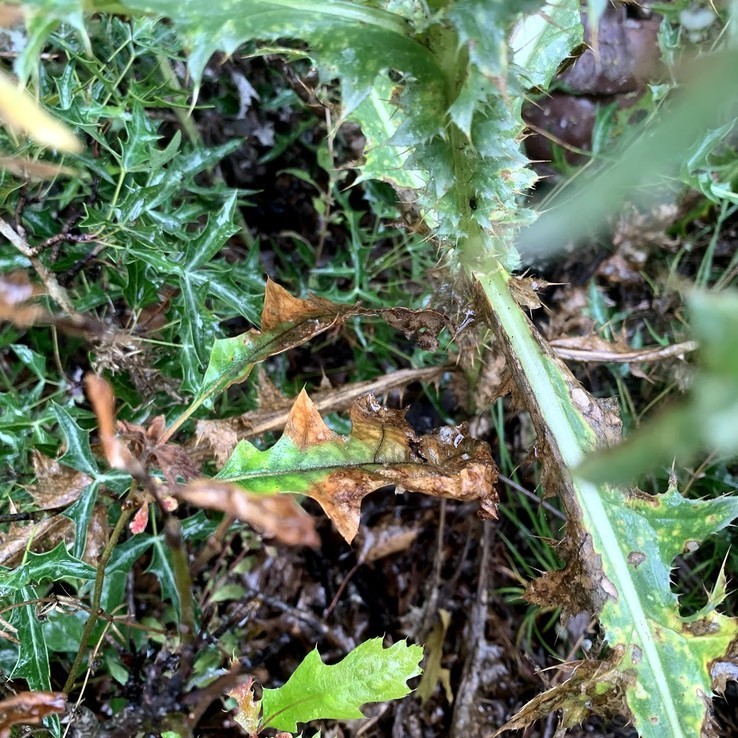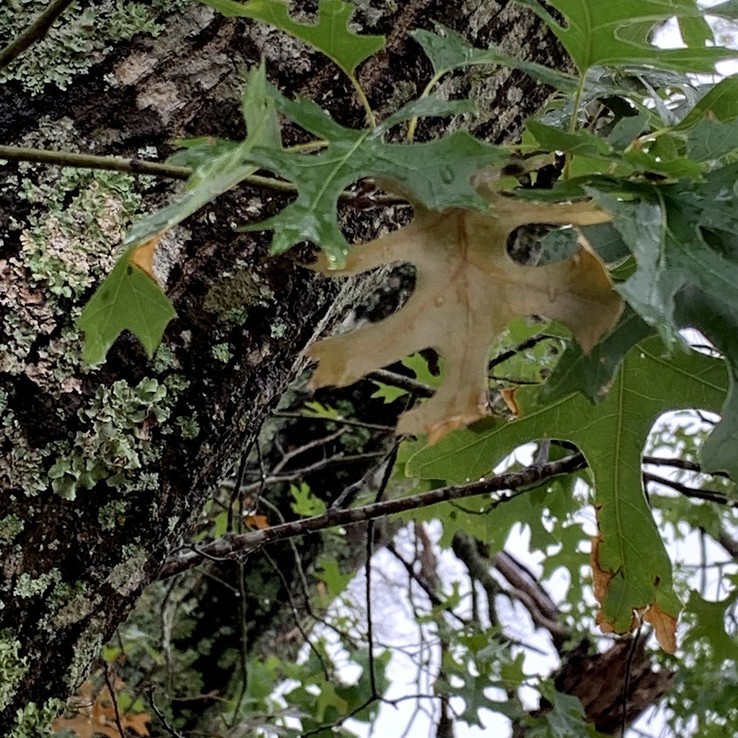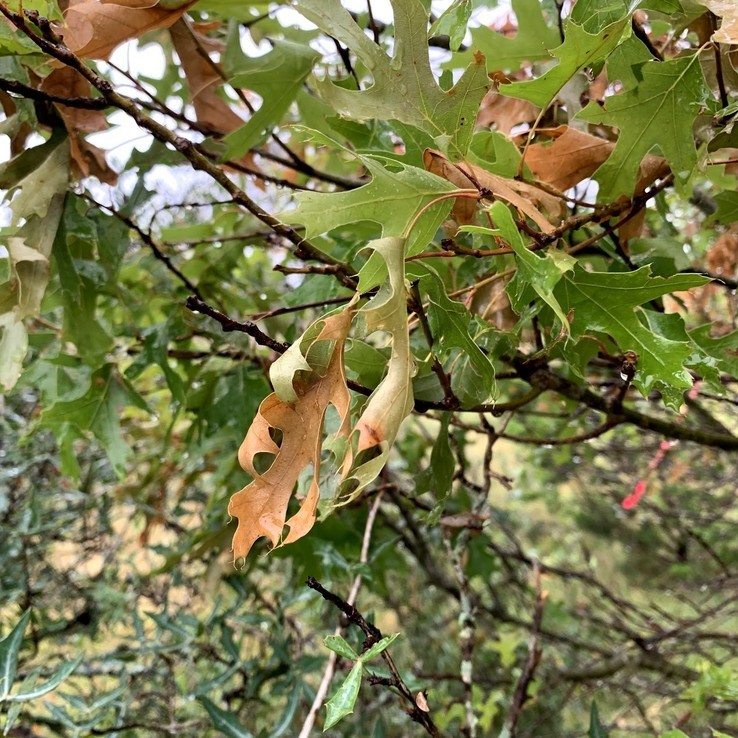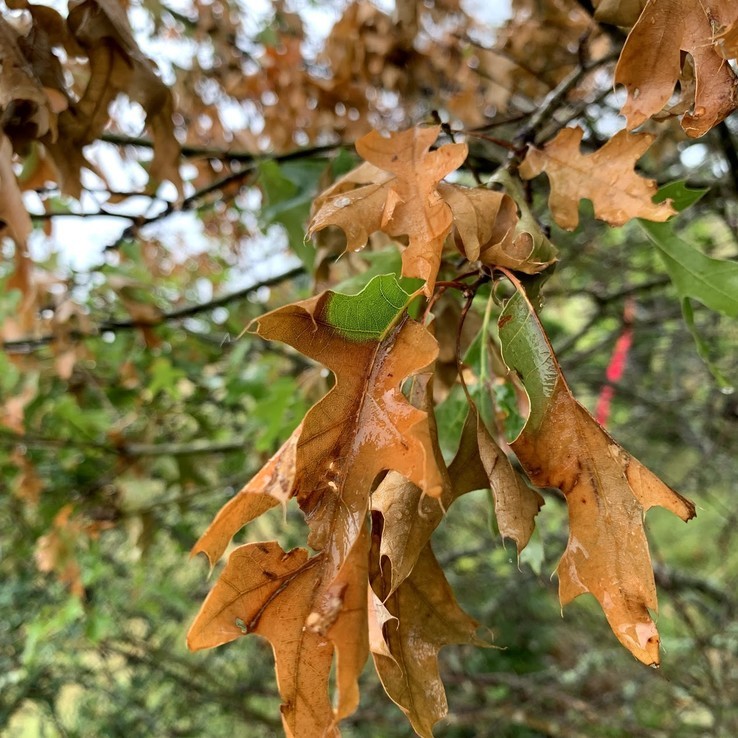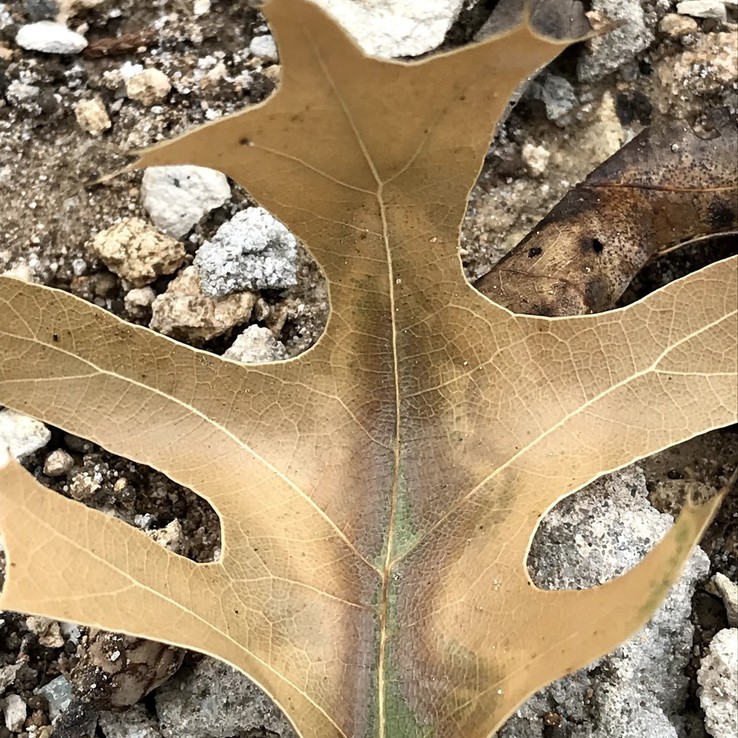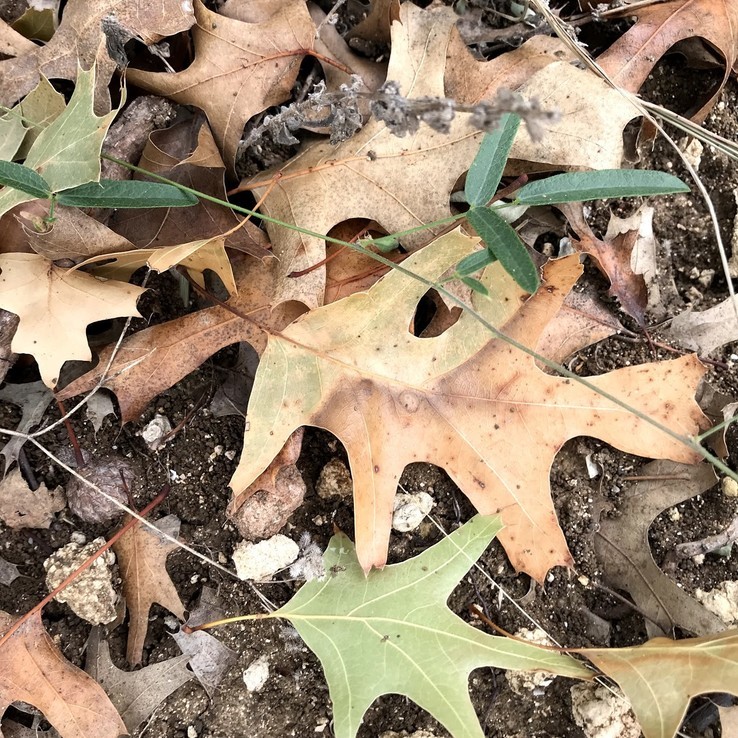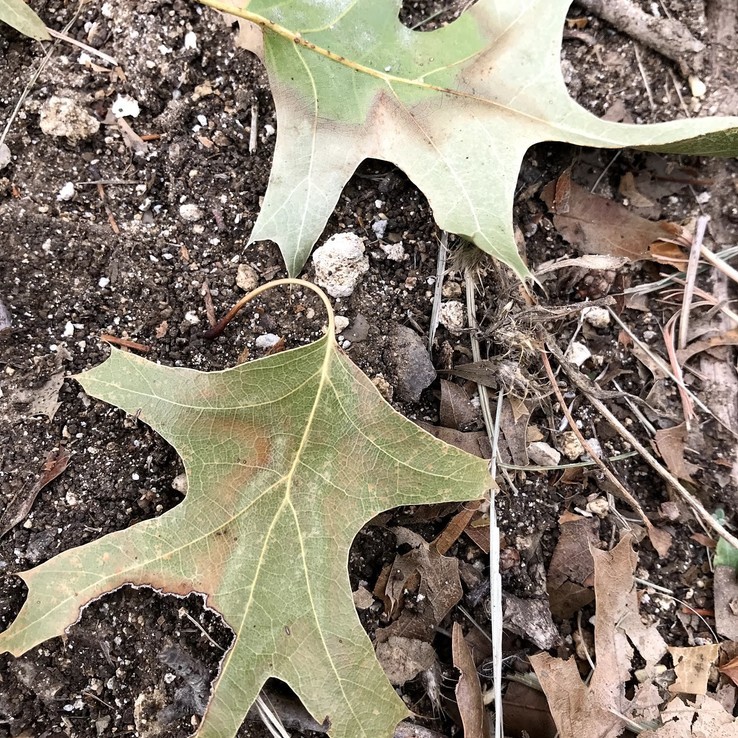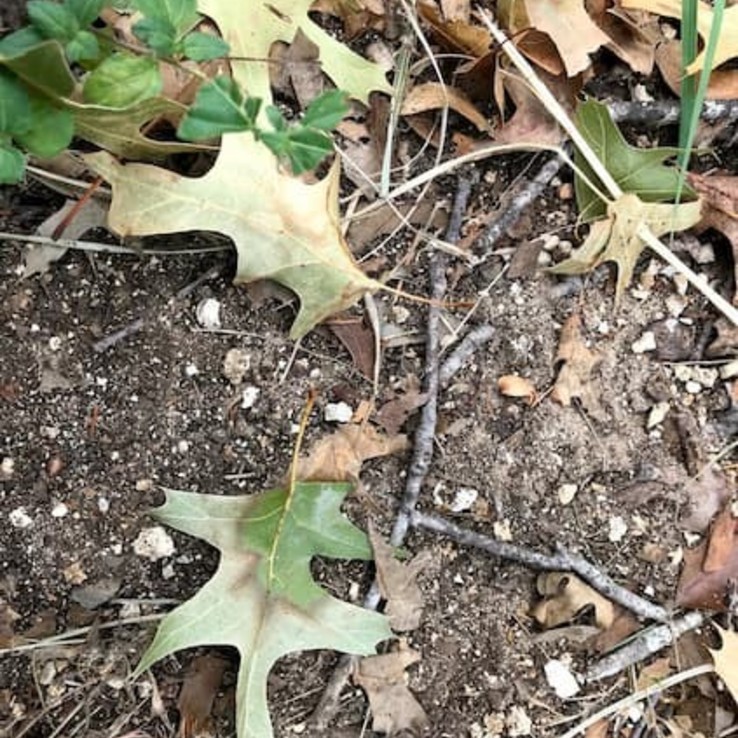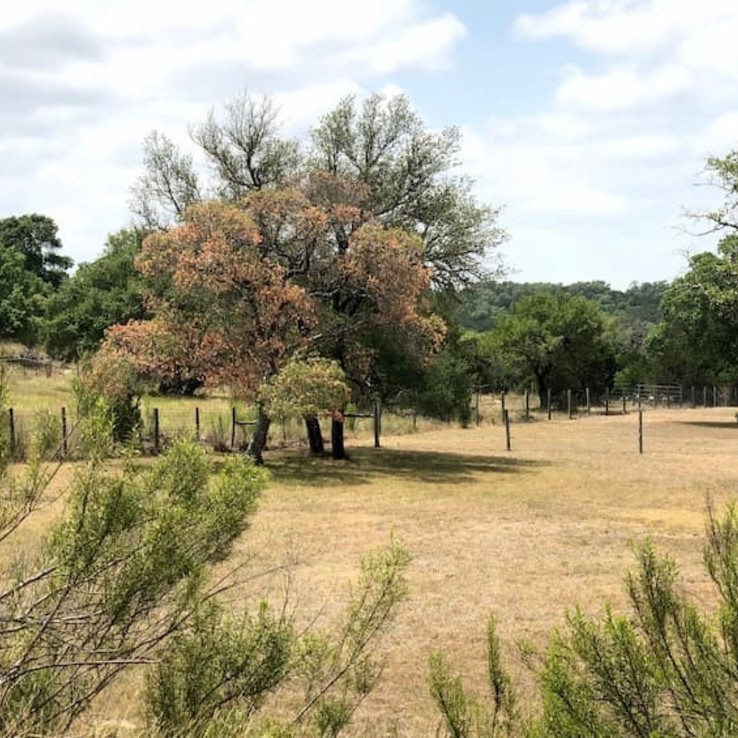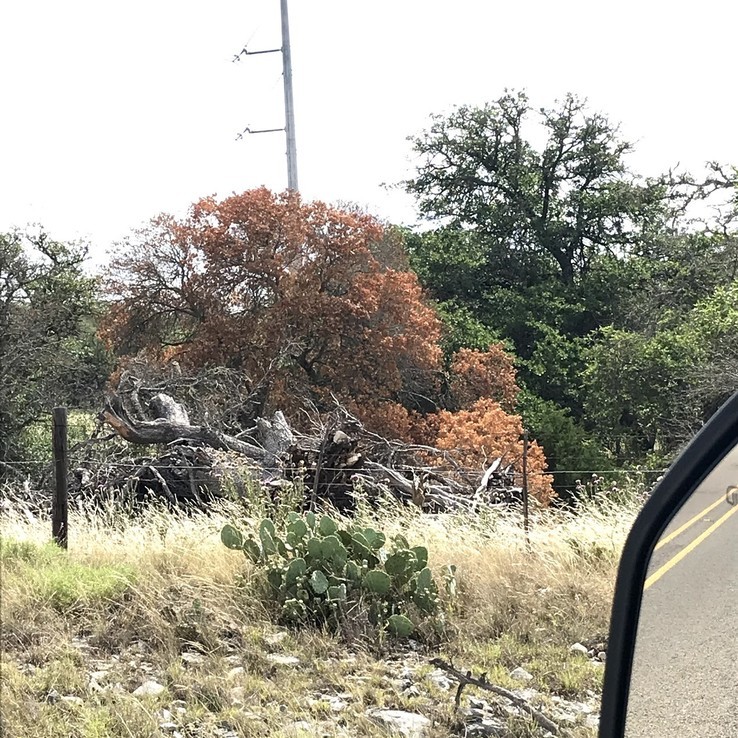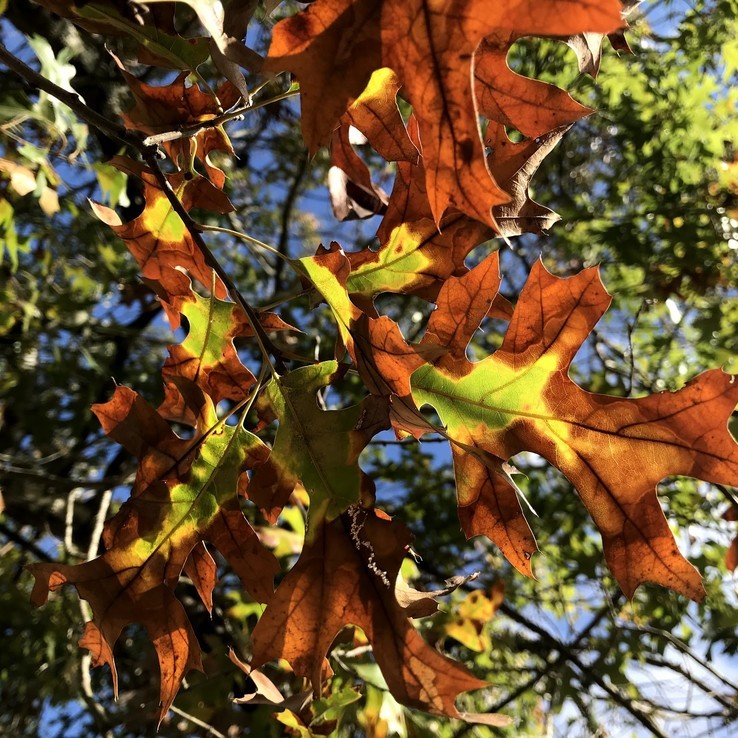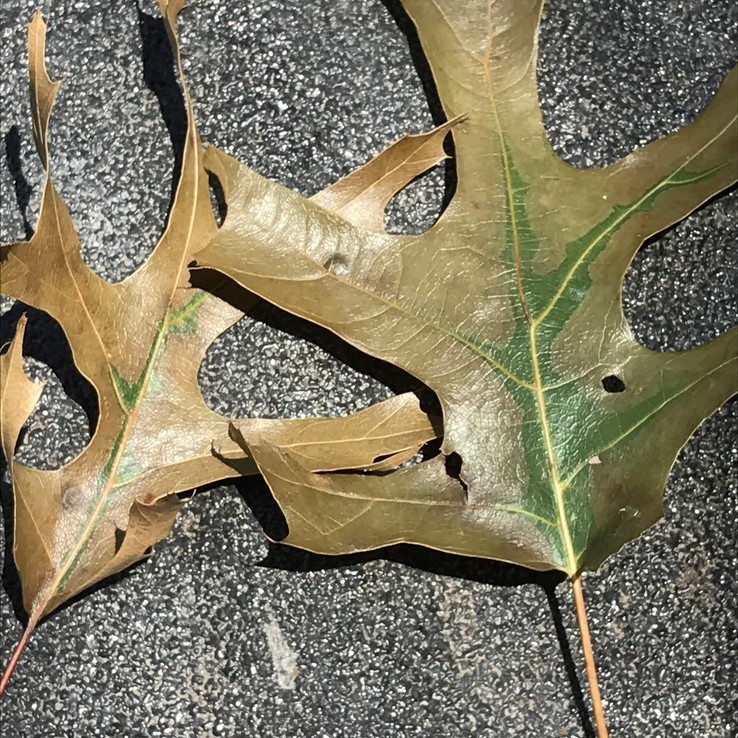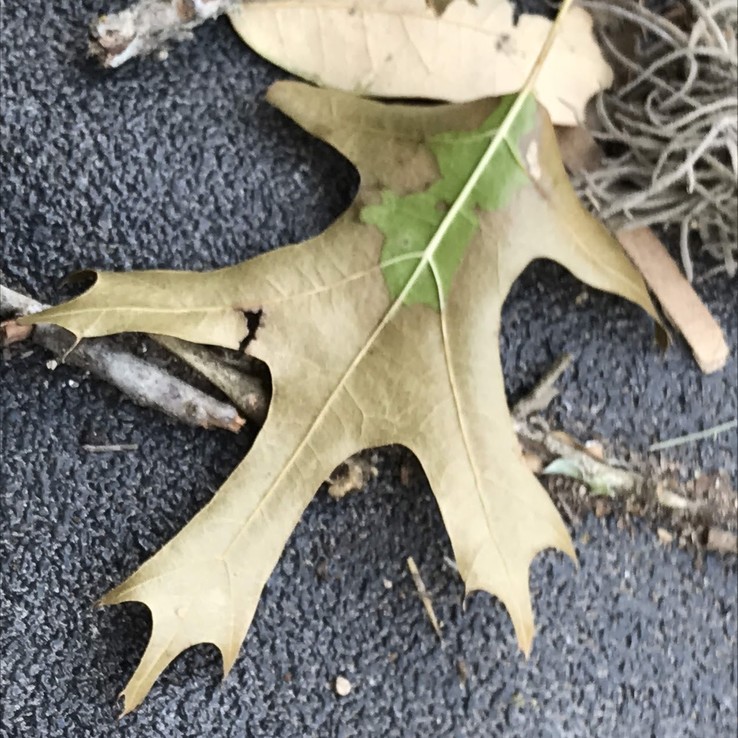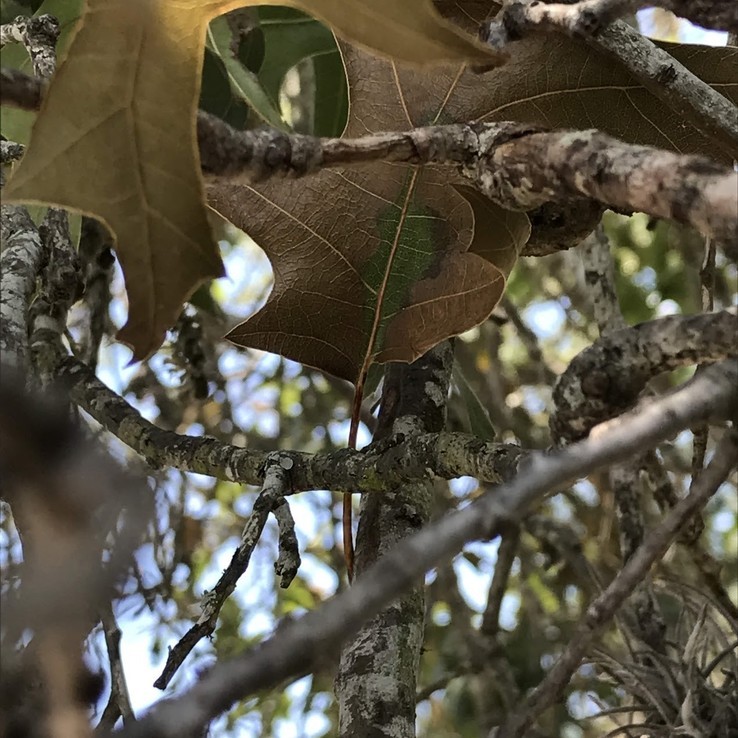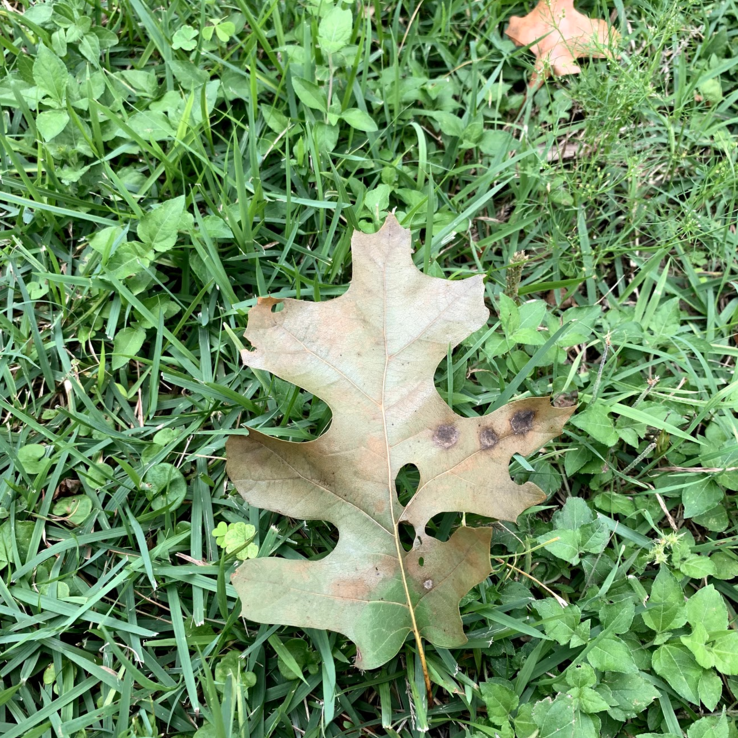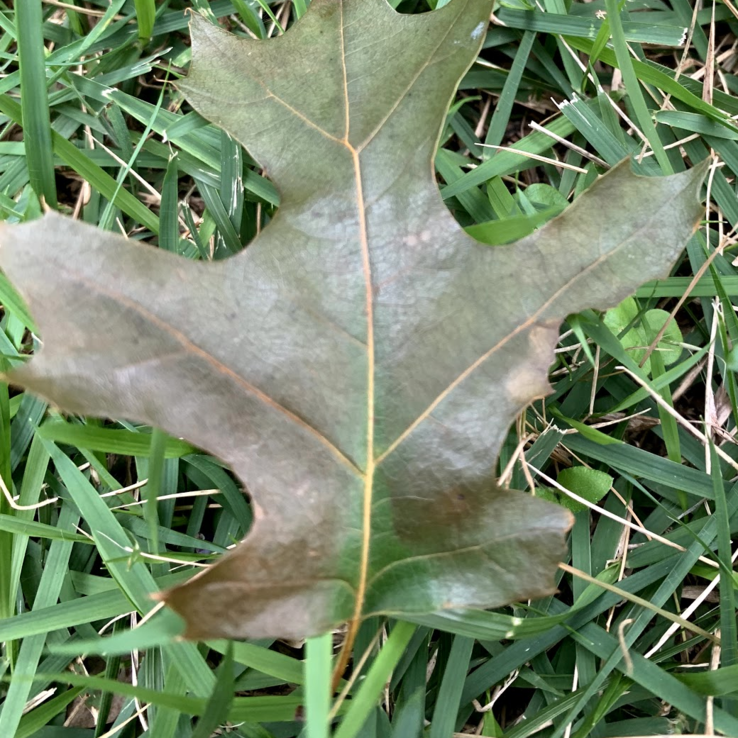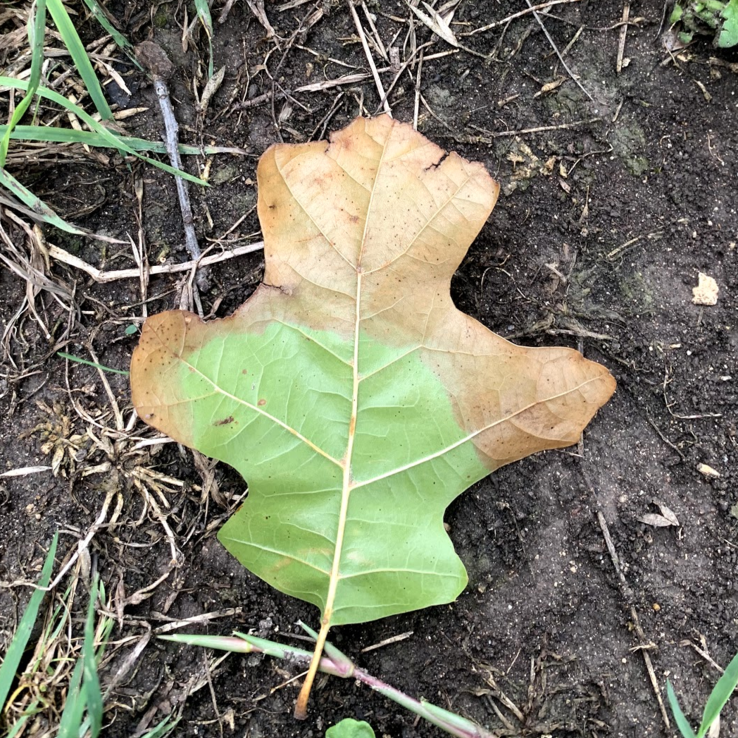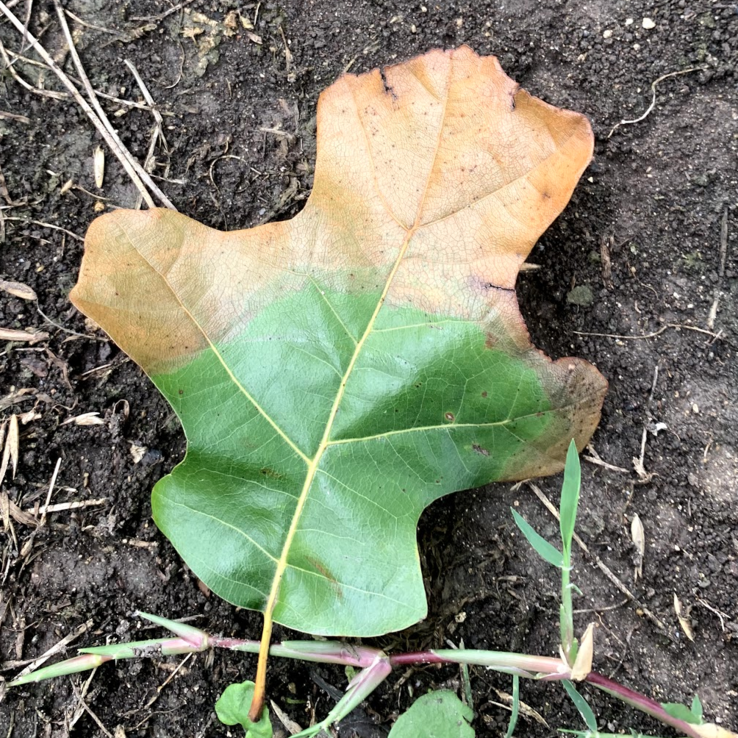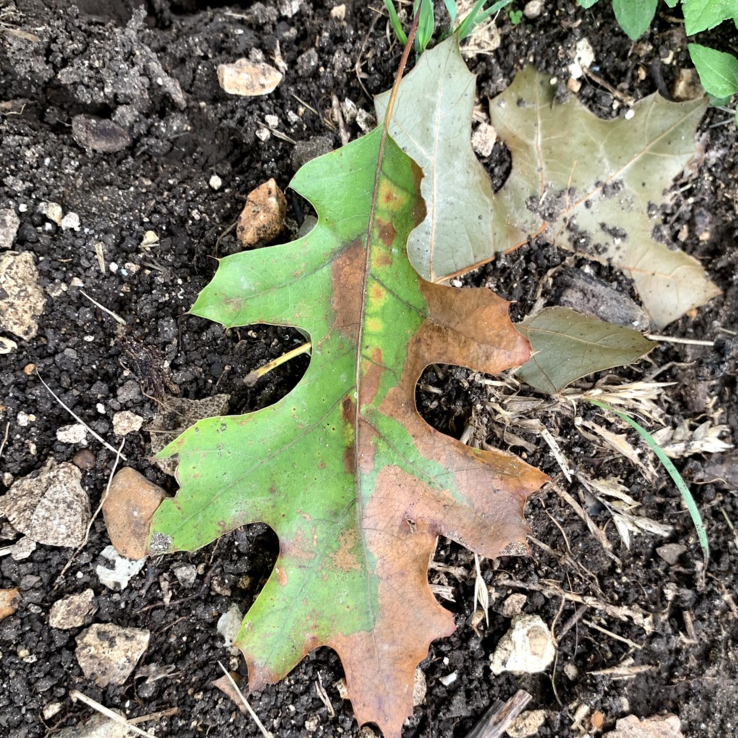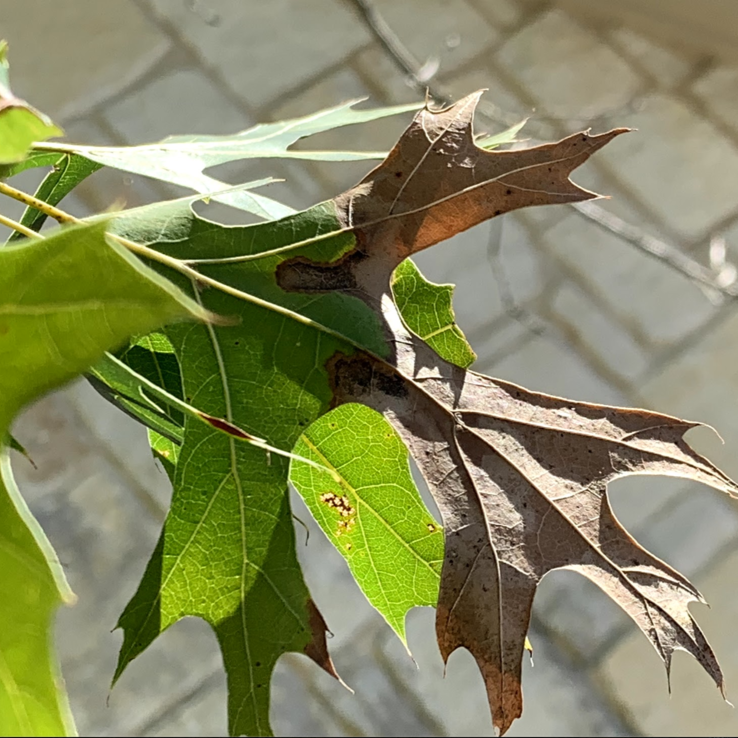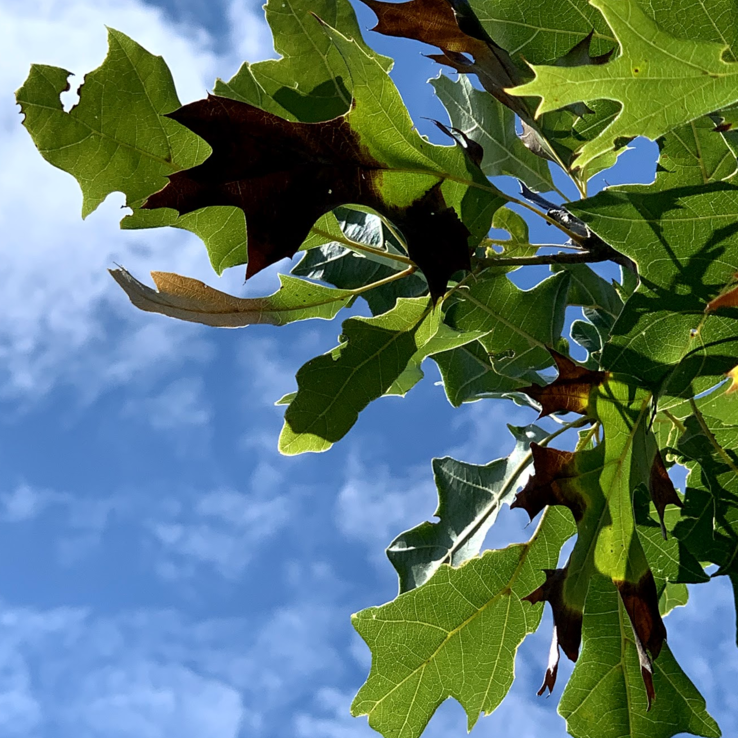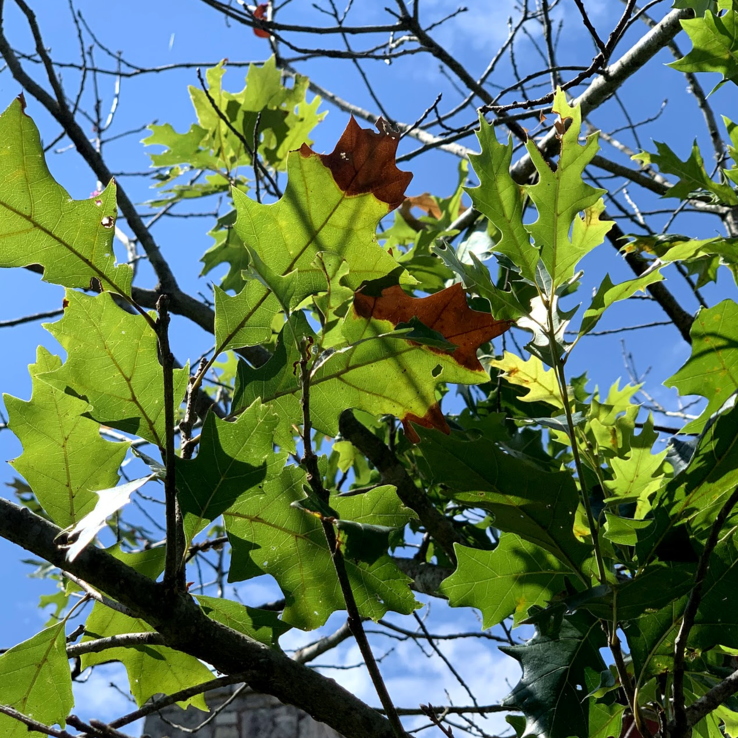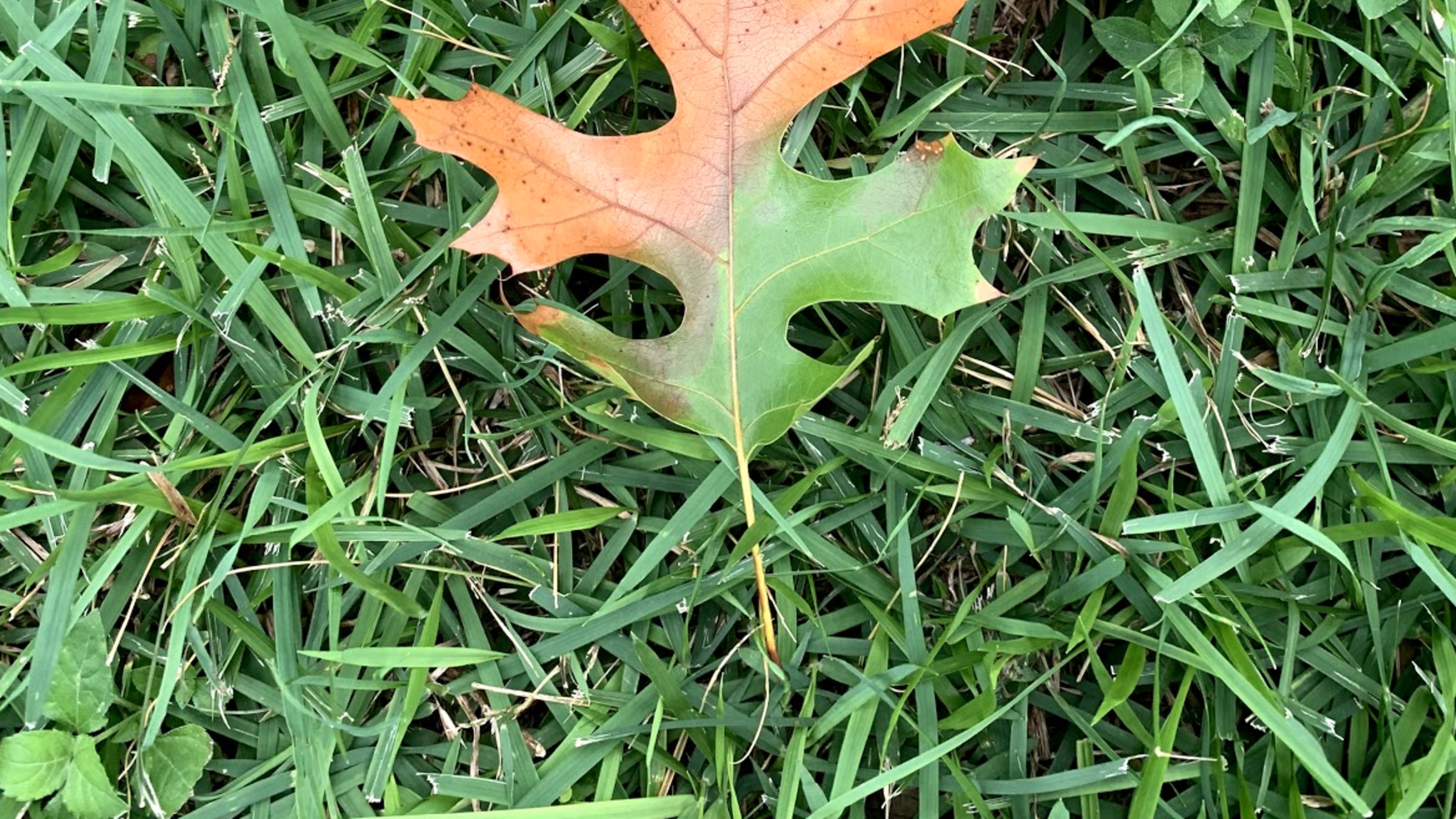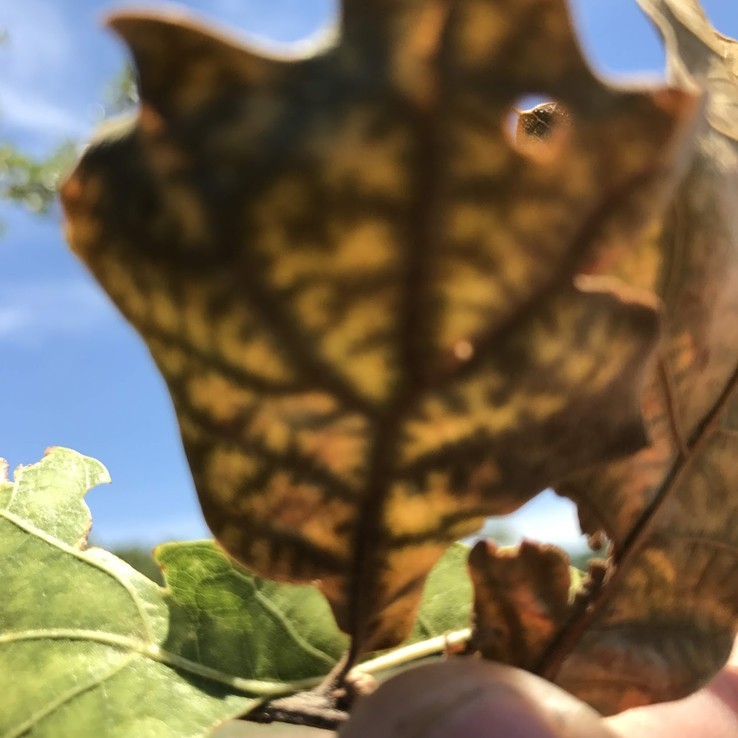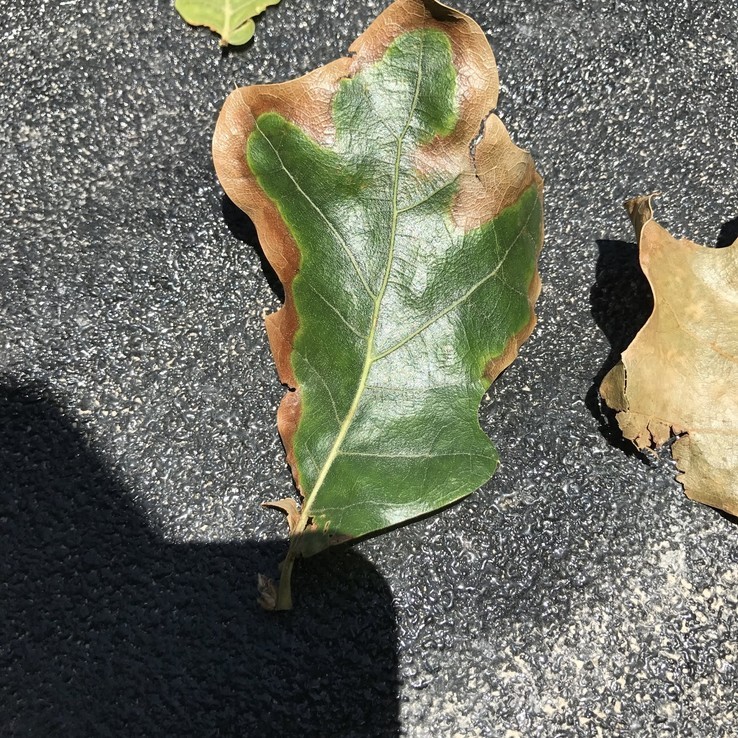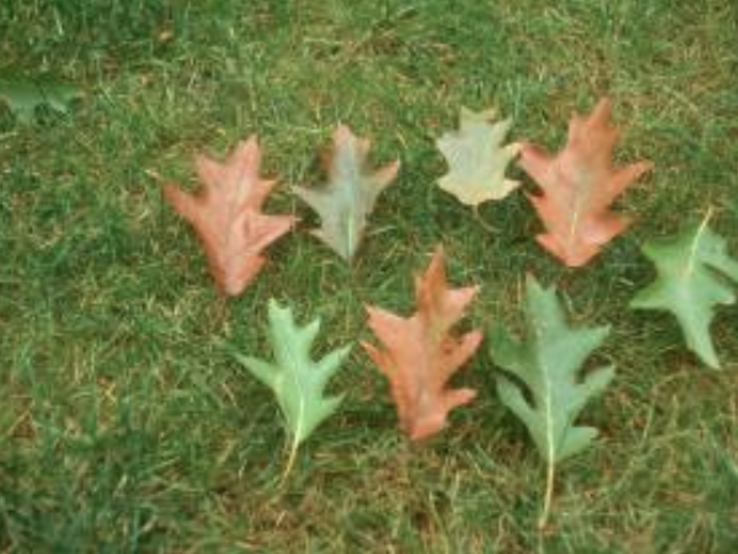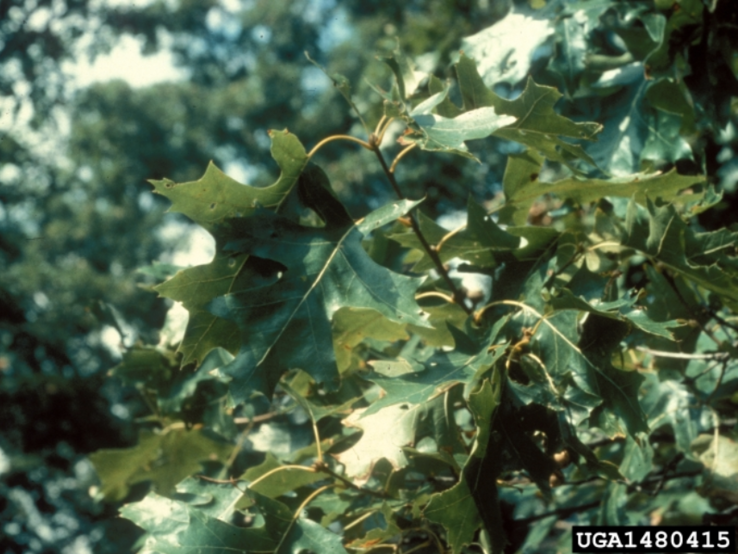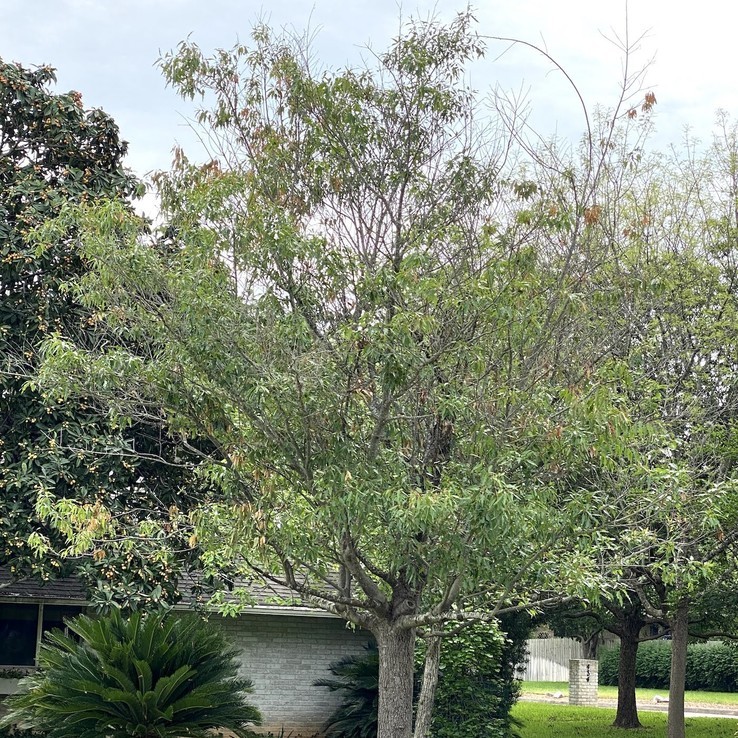Spanish Red Oak Symptoms
Quercus buckleyi
Many of the native Red Oaks in the hill country are a mostly-pure Spanish Red Oak strain. I sometimes see some traces of Texana in them and more curiously – I often see Black Jack cross-pollination (or vice versa) when these two in close proximity to each other. The Spanish Red Oak is without a doubt the second most prevalent native oak species.
It is very unfortunate that more effort is not being made to help train property owners to find and destroy red oaks with wilt. Beetles and paint is a moot point if sporulation of the red oaks isn’t allowed to occur due to a pro-active response. I believe that significant effort in this one specific task would have one of the most powerful impacts on disease management and must become a major focus of efforts from here on out.
In many cases there are not many fungal mats at any given time on any given 1000 acres, rather more likely 10-20, which is a manageable task to monitor and remedy. Further, studies done in other states give us a reasonable belief that either the use of fungicide or herbicide can prevent sporulation without labor-intensive tree removal and destruction (burn, mulch). Red Oak routinely pass the fungus to trees within grafting distance. They are often grafted with other oaks.







